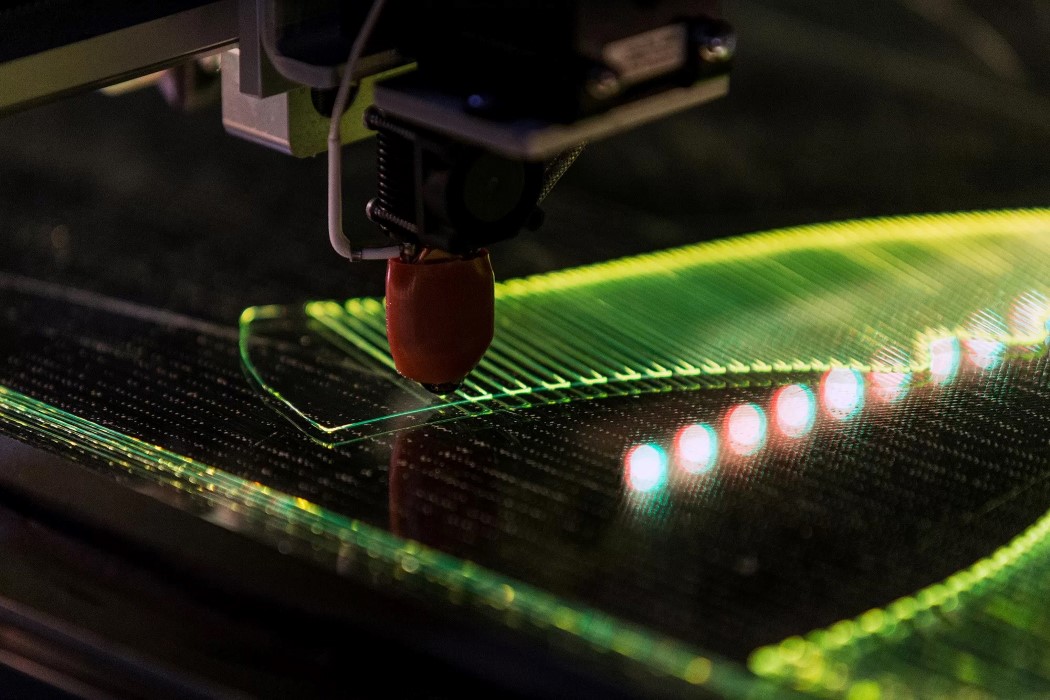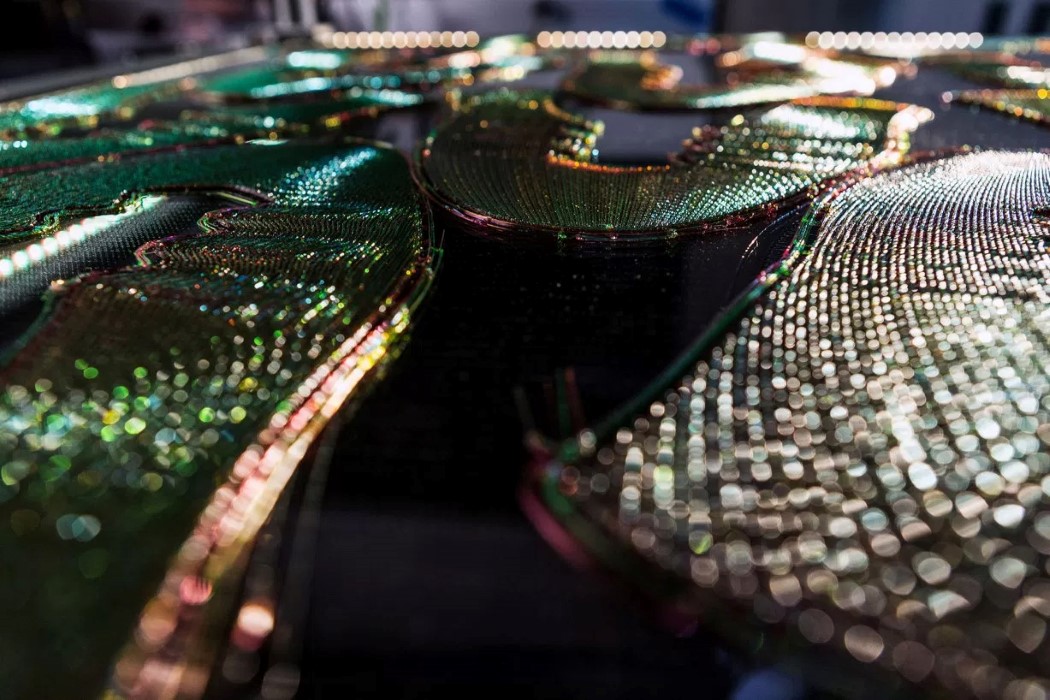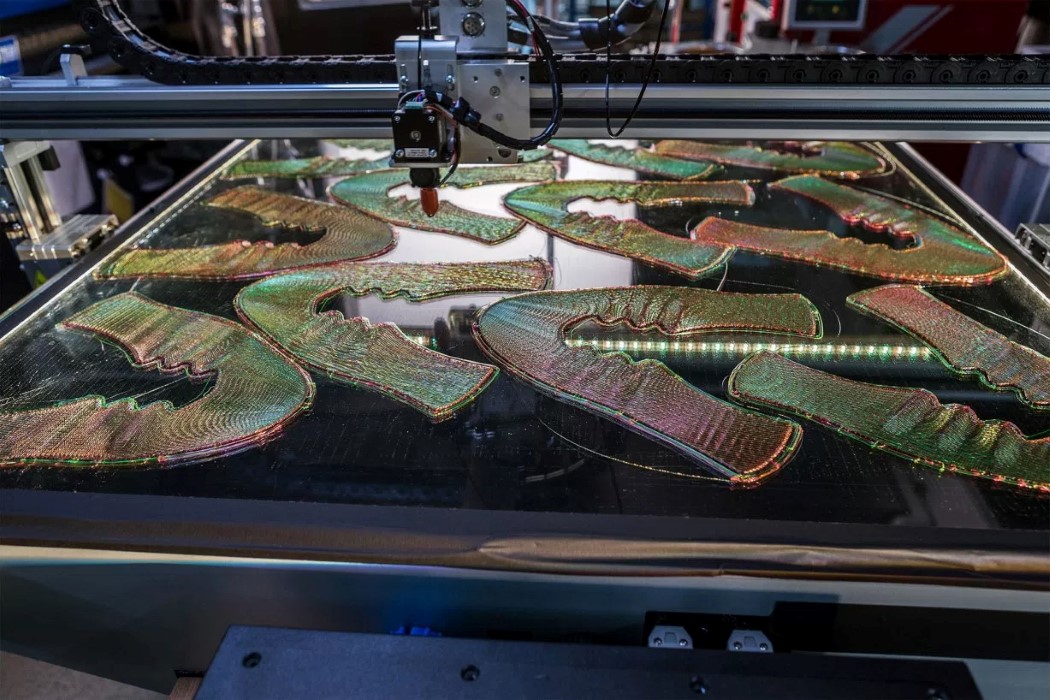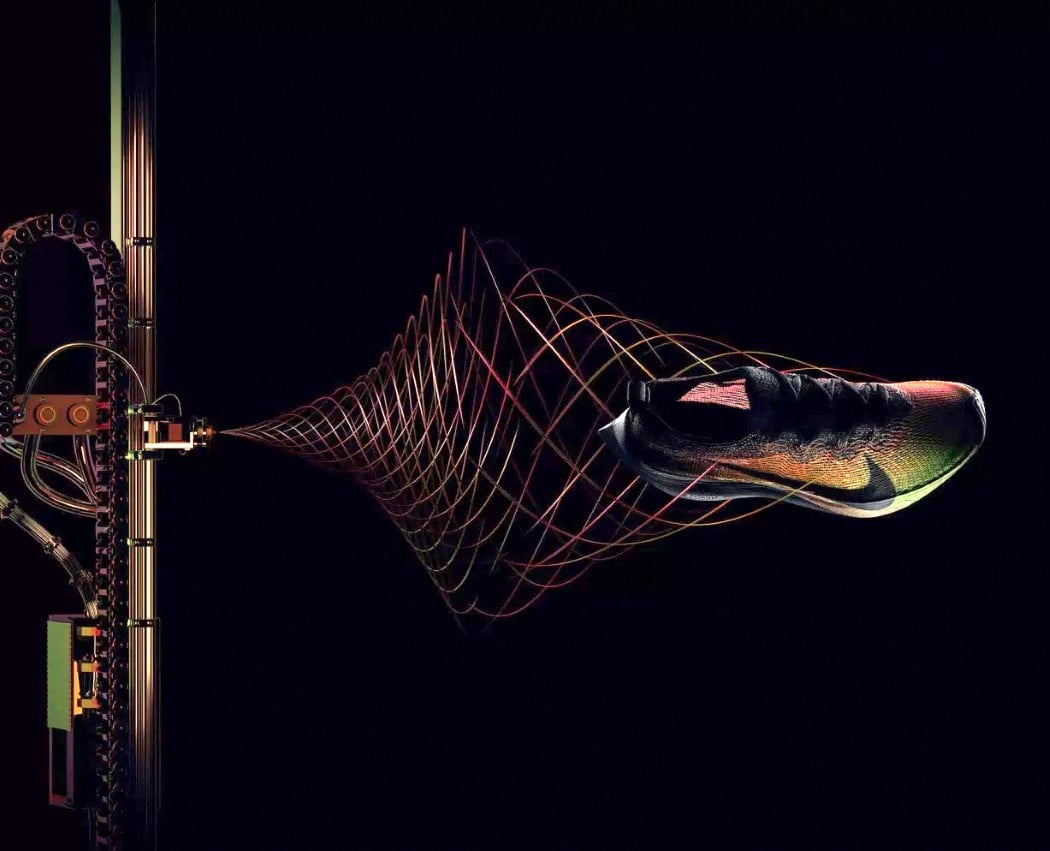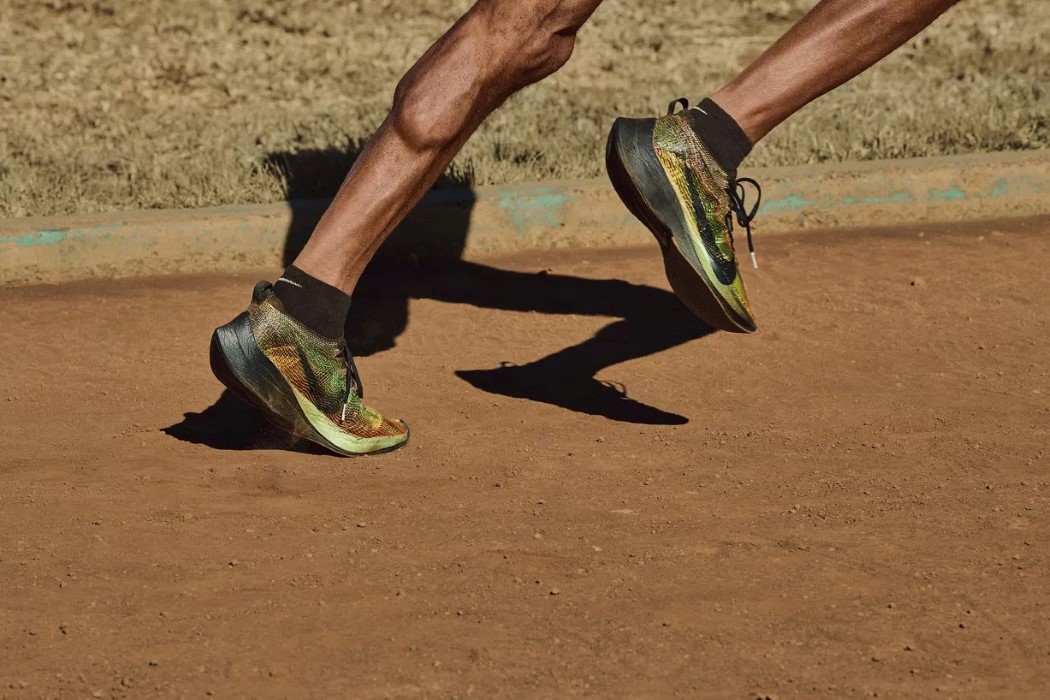https://youtu.be/RFW35vTTGQI
Athlete Eliud Kipchoge won the 2018 London Marathon wearing a pair of Nike VaporFly Elite Flyprint trainers with the world’s first 3D-printed upper. This is the world’s first trainer that’s upper half is crafted through 3D printing (much like a conceptual design we covered before). Using a 3D printer and a thermoplastic polyurethane filament, Nike can produce shoes crafted to an athlete’s foot measurement and performance data.
How is this different from Nike’s Flyknit, you ask? They’re miles apart. While Flyknit can knit together a fabric of a certain shape and size, printing out shoe parts means you can achieve something that’s more three dimensional than a 2D fabric weave. Another advantage is that while in Flyknits, the interwoven threads of fabric rub across each other when flexed, causing frictional resistance between the interlaced (warp and weft) yarns, this doesn’t happen with 3D printed textiles, where material is melted, extruded, and made to fuse together to create a single part. This technique of 3D printing shoe uppers also allows you to experiment with different kinds of weaves with incredible precision and control, making certain sections of the shoe firm, while others flexible or even breathable. This 3D printed TPU textile also works seamlessly with many other materials, most notably Flyknit yarns, to provide an optimal balance of fit and structure. In fact, Flyknit yarns can be engineered to thermally bond with the Flyprint textile, eliminating any need for glue or stitching.
Developed for last year’s Berlin Marathon, and perfected over time for this year’s London Marathon (resulting in a victory), we just may see more completely 3D printed footwear in the future… and who knows, we may be able to print our own too, instead of having them delivered to our homes!
Designer: Nike
